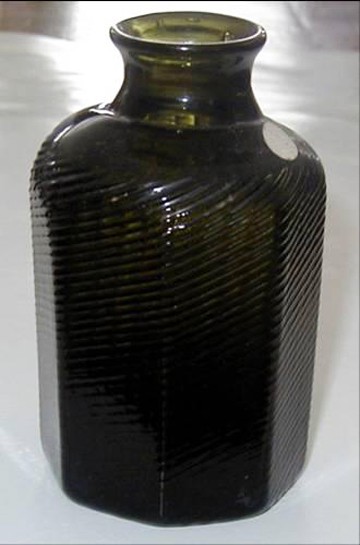
Extreme rarity in Early American Glass, from the famed Norman Heckler Sr collection. Behold the " Pitkin sided snuff" - Rick Ciralli
I was looking at all of the Peachridge Glass (PRG) post categories (see the right area of every page) thinking I had written about American snuff jars and bottles before and was surprised that I had missed this intriguing area. Actually yesterday, PRG was one year old, as I launched the site on 24 April 2011. Well over 500 posts and nothing on Snuff… until now.
Most snuff jars have a distinctive, box-like appearance and wide mouth.
Well back to snuff, which is a tobacco product either powdered or taken (snuffed) into the nostrils by inhalation or ground and placed between the cheek and gum. While popular amongst the royalty in early Europe, the product declined amongst the well to do around 1850. Snuff is still widely used today throughout Europe.
Most snuff jars have a distinctive, box-like appearance and wide mouth. Many of the early examples are pontiled. The glass colors are usually yellow olive, olive green and a greenish amber.
Apparently, many of the early jars have dot patterns on the base. The jars were filled before the labels were put on because of the strength properties of the snuff, so the packers needed the dots to know what went where. Most folks were illiterate back then, so dots were used instead of words. 5 and 6 dots would indicate heavy snuff for the mouth, which was not to be sniffed. A pontil marked, 1840-1850’s snuff may have two marks purposely made with iron rods on the bottom while a 20th century machine made snuff had the dots too. I would like to hear more about this from the snuff jar collectors.
Looking around the web and facebook allowed me to use a few pictures to show how nice-looking these bottles are.
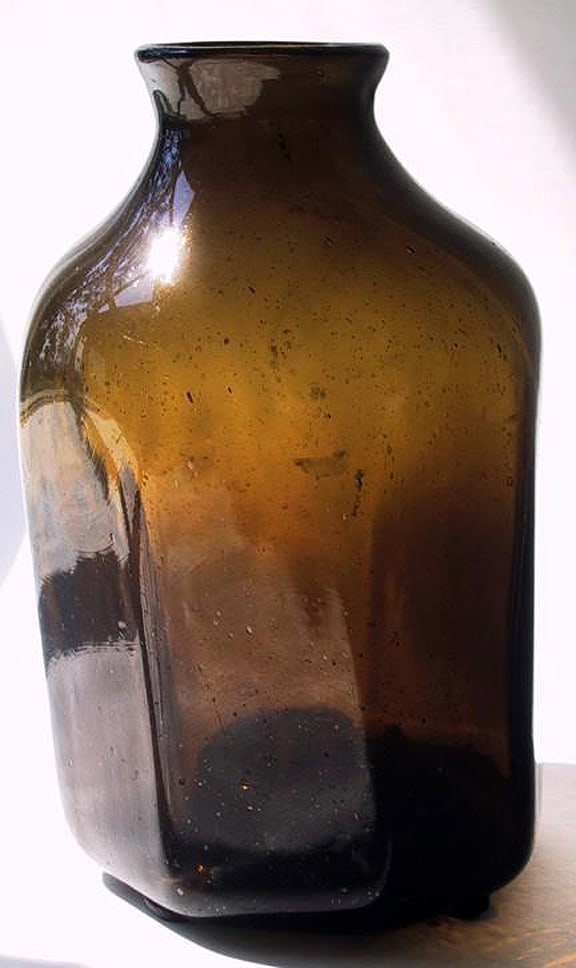
Octagonal (not square with beveled edges but eight equal sides). Unquestionably New England and probably Connecticut in origin - Jeff Noordsy
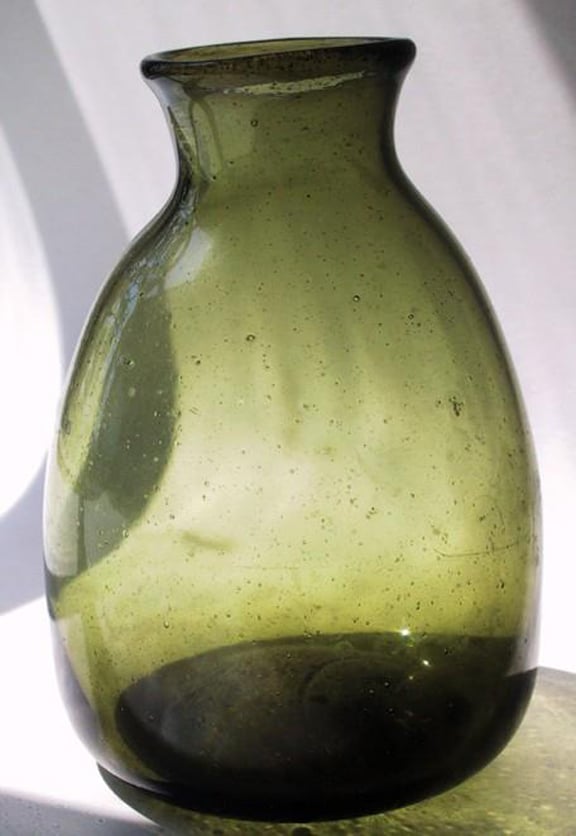
Colloquially referred to as the Pitkin egg. This example came from a Southerner by the name of Richard Haygood. It arrived in Vermont wrapped in a sock and packed in "popcorn" (not the foam stuff but the type you put butter on) – Jeff Noordsy
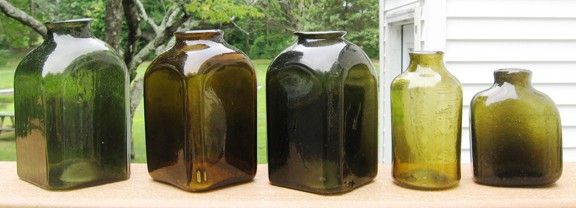
Rick Ciralli notes Snuff's acquired from Jeff Noordsy, Norman Heckler Sr, Dana Charlton-Zarro, Jeff Noordsy again and the last lil pup is now in the Michael George collection
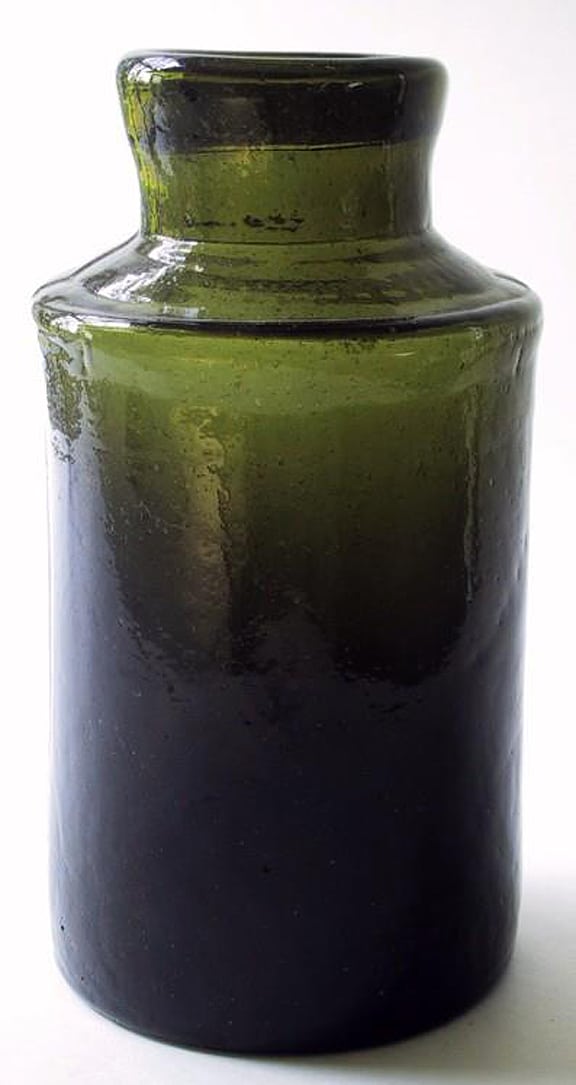
Over the years, called a snuff and a mustard. The bottle was dug about 15 years ago by Roy Topka in the rough area of Mount Vernon/Mount Pleasant. Also in the hole were half a dozen Brinckerhoffs (which I bought second hand at the time for $400 and struggled to sell for $450), multiple Phoenix Bitters and the famed "Icelandic Balm for Pulmonary Consumption." The piece has a HUGE tubular pontil scar and some interesting base markings. It is to this day the only example I've encountered - Jeff Noordsy
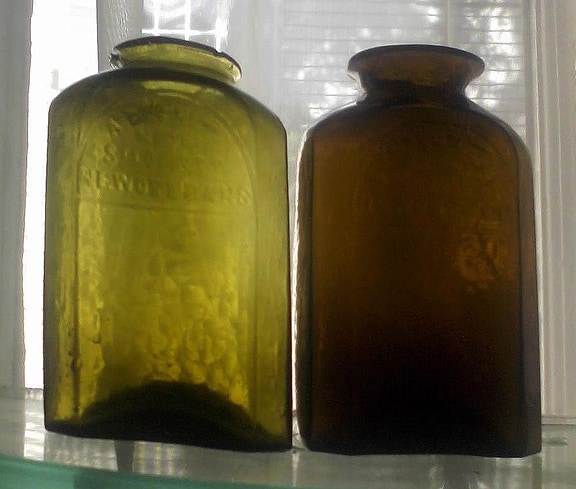
Open pontil and iron pontil. A. Delpit / No.16 / ST. Louis St. / New Orleans, Yellow-green and deep red-amber. circa !842-1858. c.a. - Charles Aprill
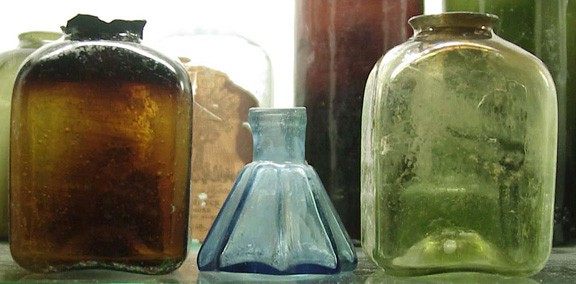
Two very interesting mid Atlantic snuffs. Both are badly damaged but blown in the same dip mold. The one on the left is an amber with darker striations shading to black in the shoulder and lip. The one on the right is a pale yellow green shading to a yellow-amber in the lip. These along with the blue Baltimore star ink came of out an 1830s-50s privy dug in west Baltimore – Chris Rowell

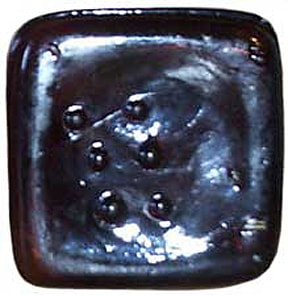
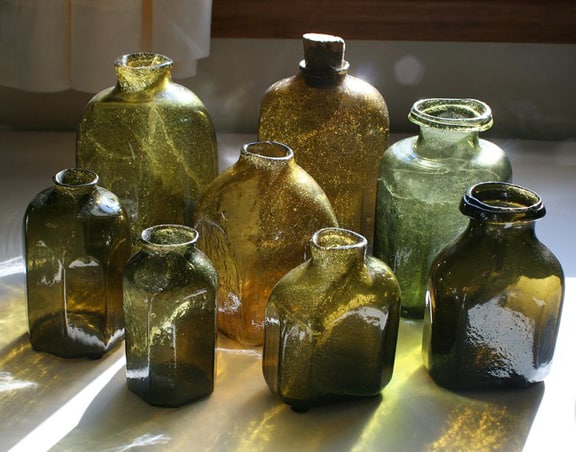
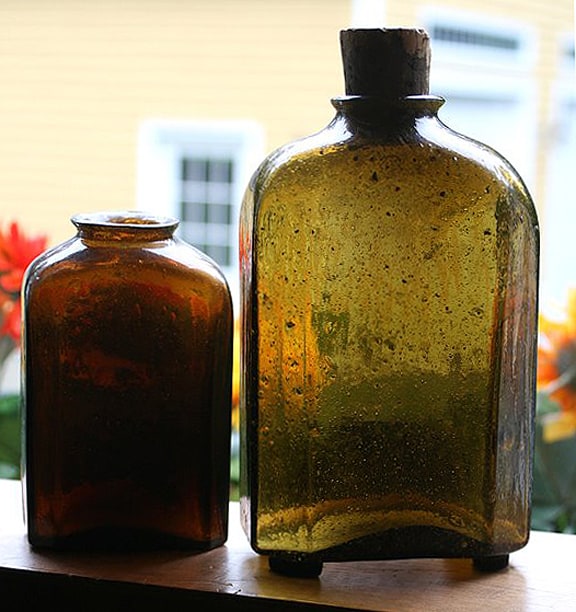
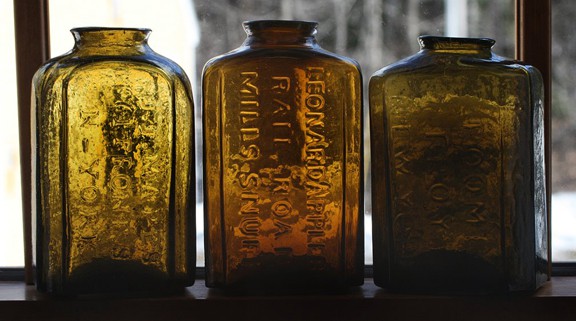
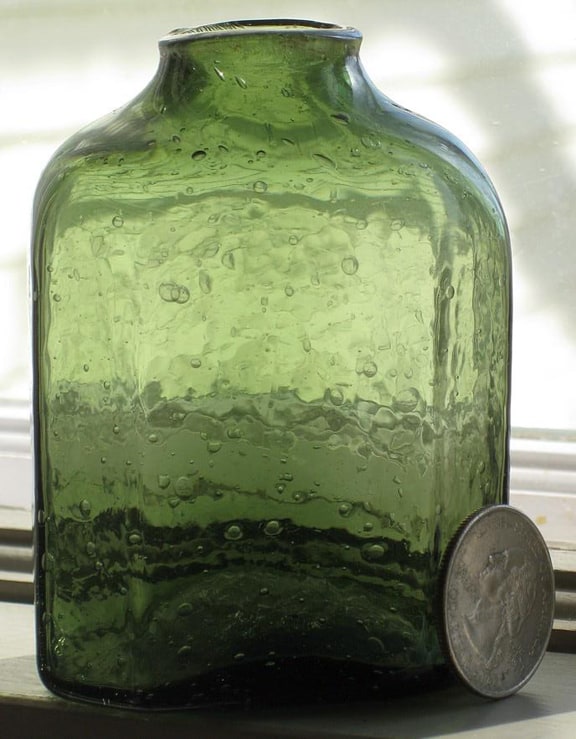
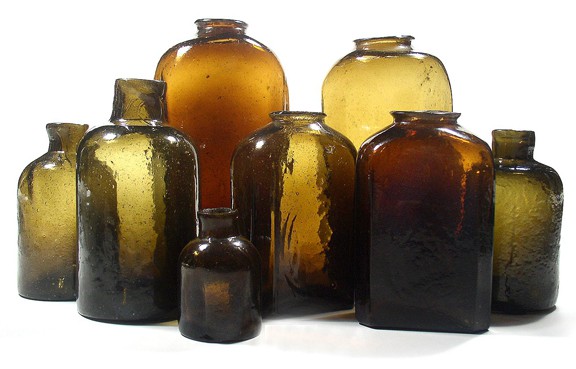
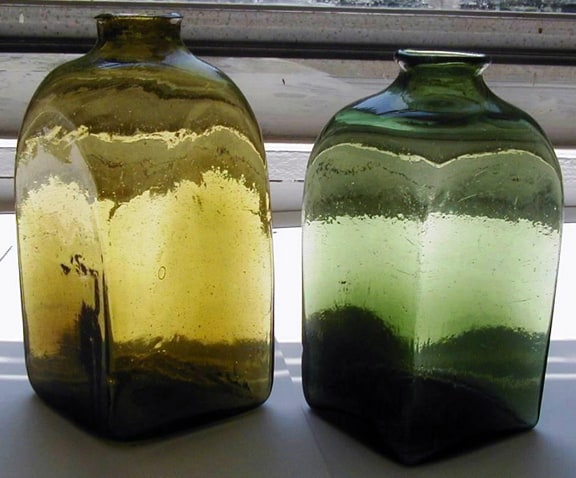
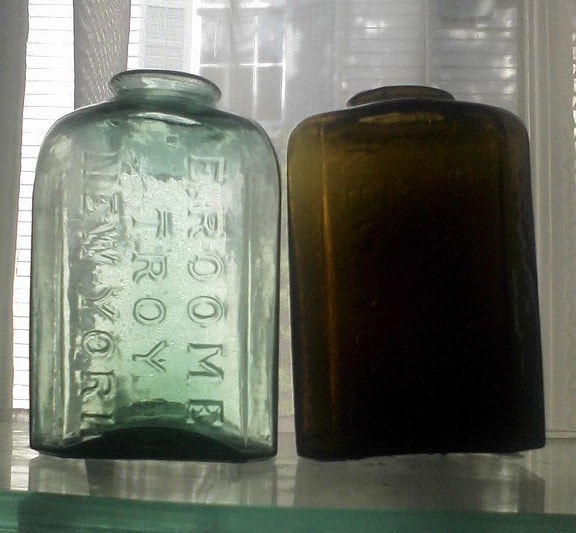
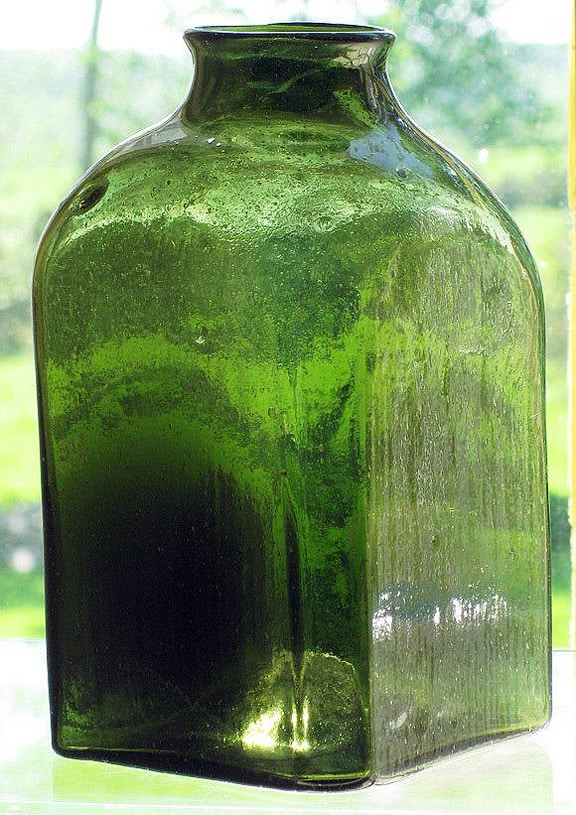
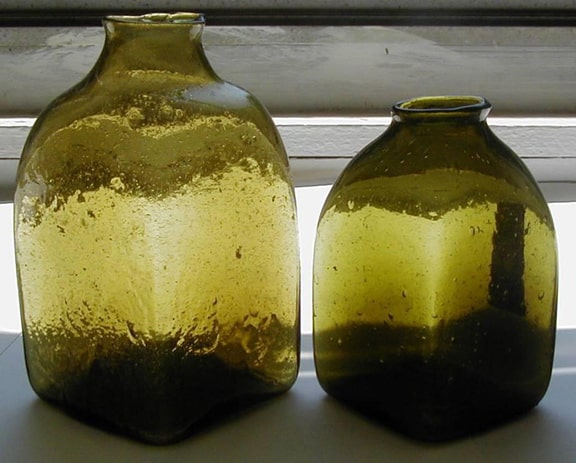
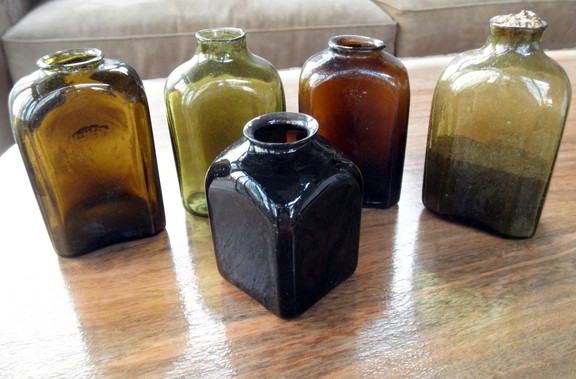
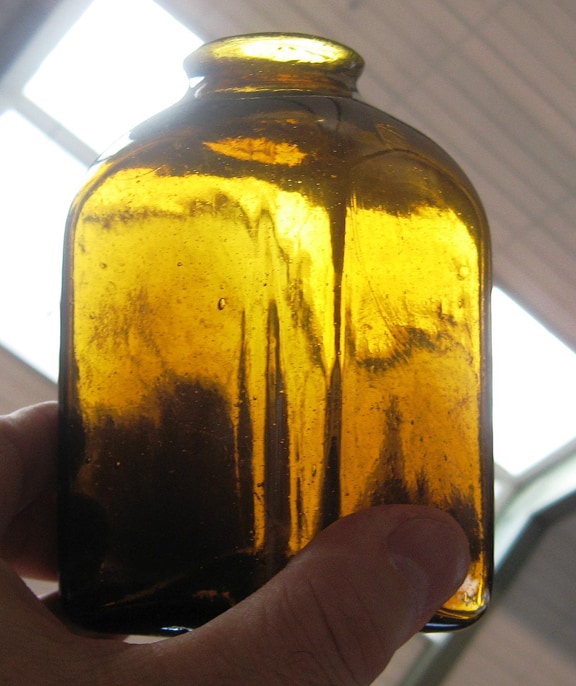
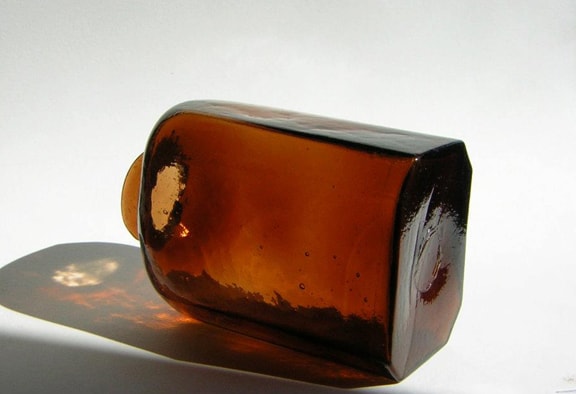
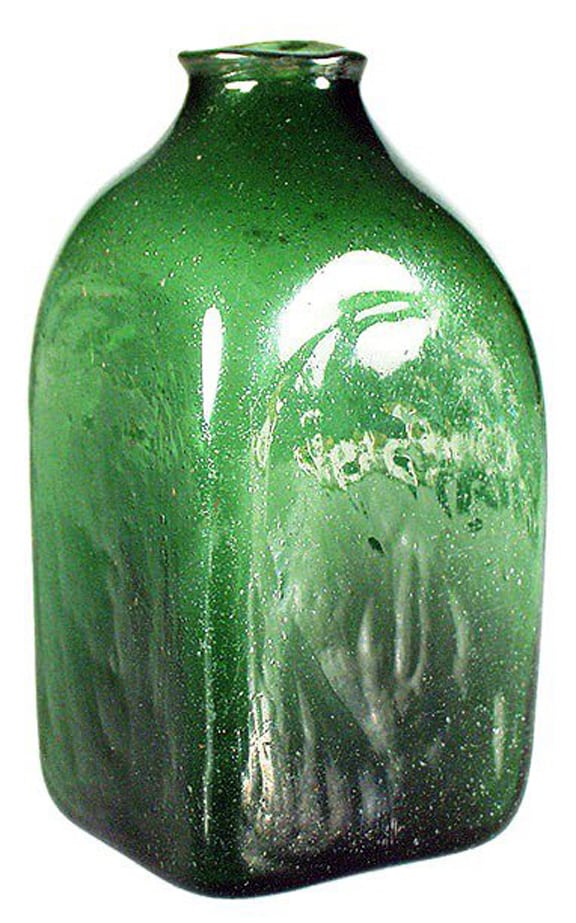
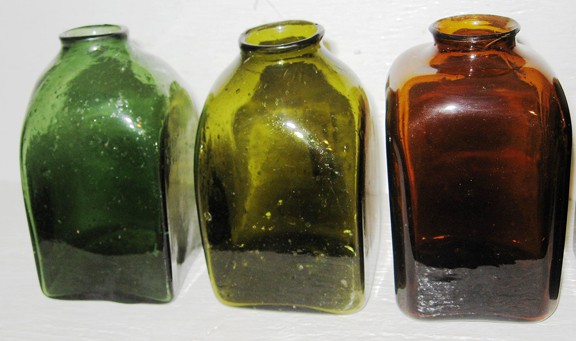
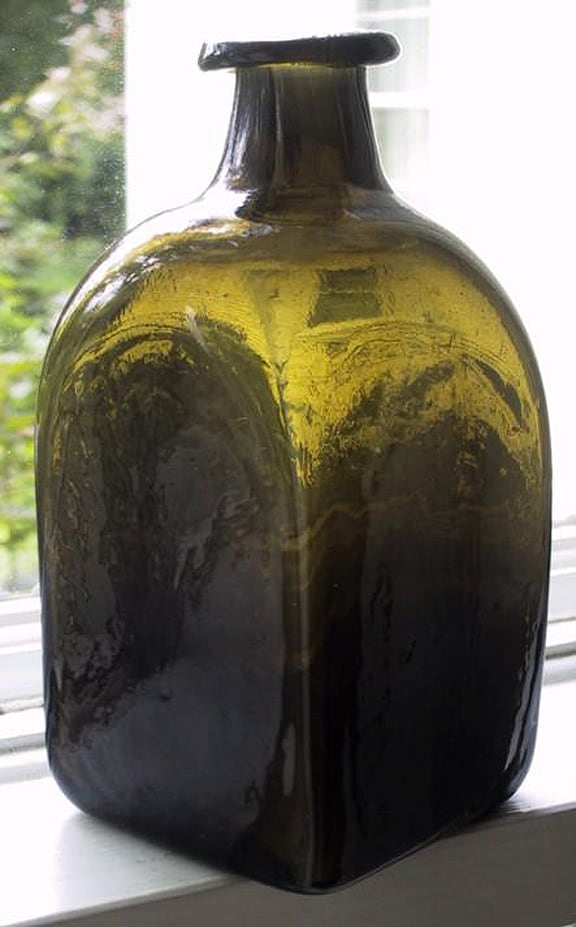
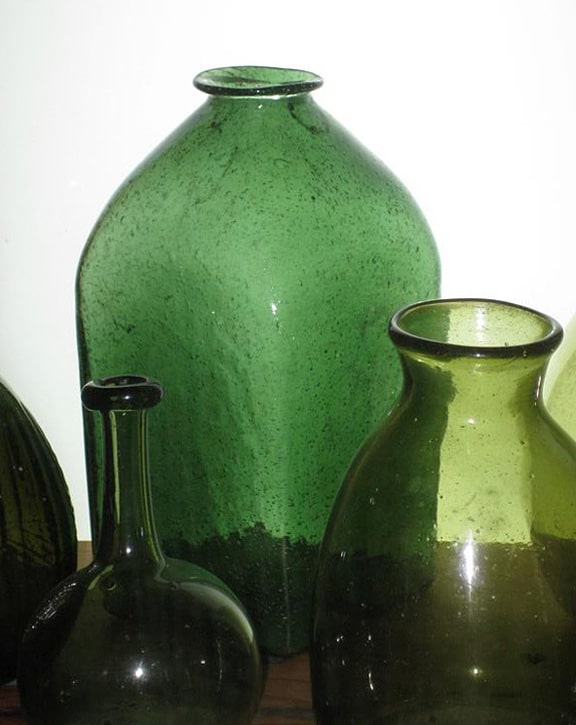






Beauties!
Excellent piece with wonderful photos.
The three embossed snuffs of Michael George were left to right:
J.J.Mapes, Leonard Appleby and E.Roome.
c.a.
Thanks Charles. I updated caption beneath picture.
Was going thru this excellent website the other day & noticed the snuff or mustard bottle I had dug years ago. Nice looking piece and I had forgotten about it until I saw the picture and started to read the caption which brought back memories of the good digs of the 90’s. Not that it matters now, but just to set the record straight as over the years I have heard different versions of the dig, The snuff or mustard bottle (I think) may have come from the Brinkerhoff pit. Out of that hole (all pontils) came six or seven perfect Brinkerhoffs, (plus some cracked) one olive-amber Phoenix Bitters, one green Friehots (not sure of spelling) Renovator, Ten or eleven Hooflands German Bitters, Three Rowand & Waltons Panacea, plus others. The Iceland Balsam came from another close by pontil privy which if I remember had a Buckhouts Dutch, Waters ink with an extremly long neck, never seen another like it, and some nice stoneware bottles. Those were the days !!